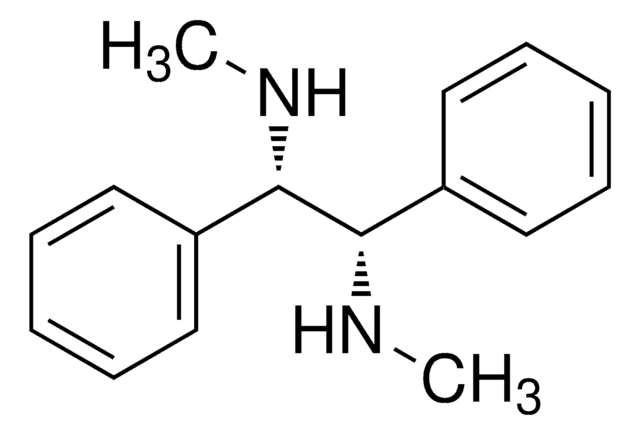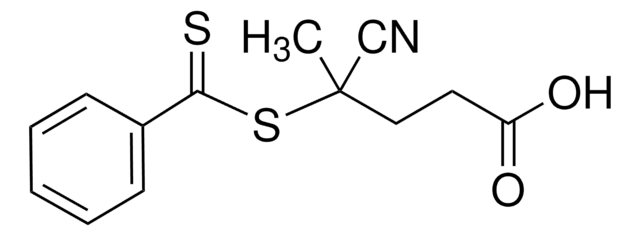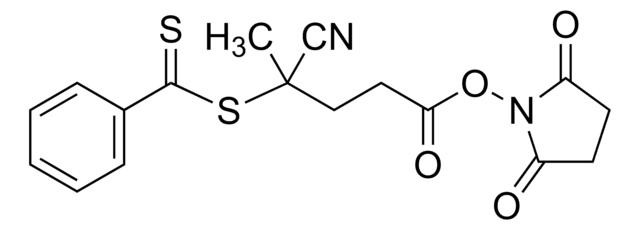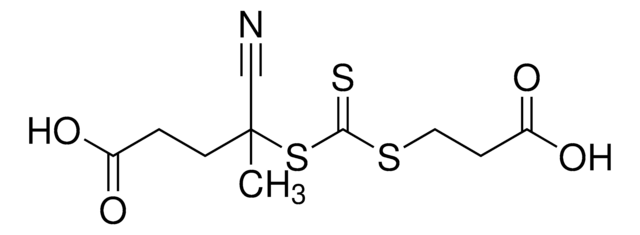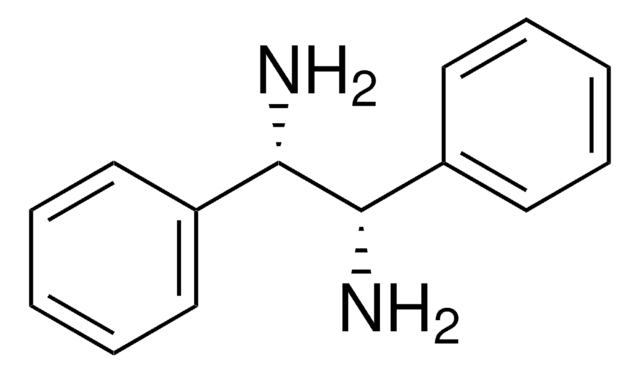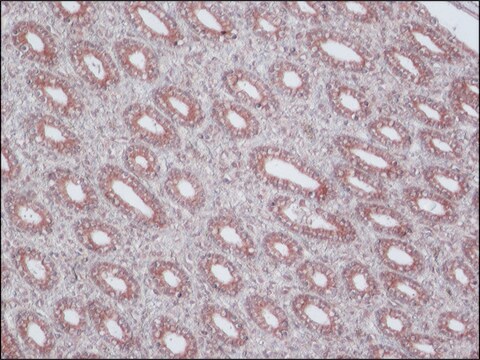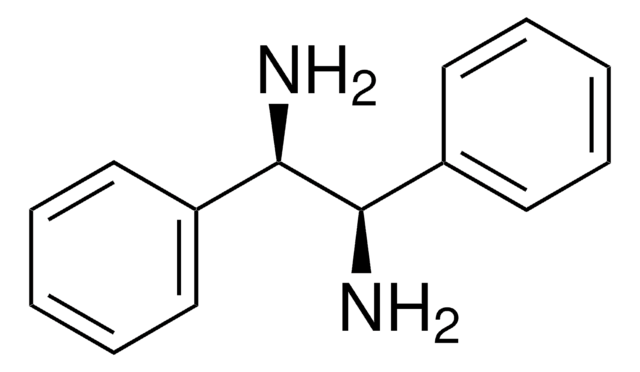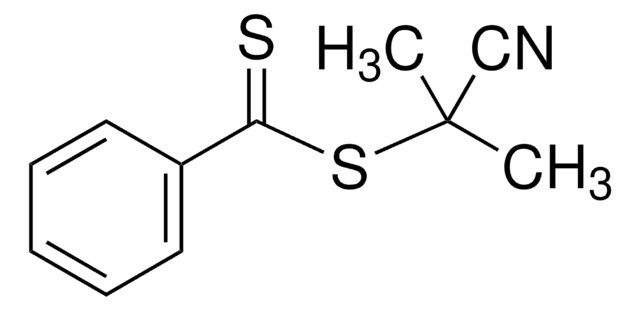765147
2-Nitro-5-(2-propynyloxy)benzyl 4-cyano-4-(phenylcarbonothioylthio)pentanoate
97%
Synonyme(s) :
Clickable CTA, Light-sensitive clickable RAFT agent, RAFT agent
About This Item
Produits recommandés
Pureté
97%
Forme
solid
Pf
90-94 °C
Température de stockage
2-8°C
Chaîne SMILES
C#CCOC1=CC(COC(CCC(C)(C#N)SC(C2=CC=CC=C2)=S)=O)=C([N+]([O-])=O)C=C1
InChI
1S/C23H20N2O5S2/c1-3-13-29-19-9-10-20(25(27)28)18(14-19)15-30-21(26)11-12-23(2,16-24)32-22(31)17-7-5-4-6-8-17/h1,4-10,14H,11-13,15H2,2H3
Clé InChI
IOYDTDXAMFFKOA-UHFFFAOYSA-N
Description générale
Application
Mention d'avertissement
Warning
Mentions de danger
Conseils de prudence
Classification des risques
Aquatic Acute 1 - Eye Irrit. 2 - Skin Sens. 1
Code de la classe de stockage
11 - Combustible Solids
Classe de danger pour l'eau (WGK)
WGK 3
Point d'éclair (°F)
Not applicable
Point d'éclair (°C)
Not applicable
Faites votre choix parmi les versions les plus récentes :
Certificats d'analyse (COA)
Vous ne trouvez pas la bonne version ?
Si vous avez besoin d'une version particulière, vous pouvez rechercher un certificat spécifique par le numéro de lot.
Déjà en possession de ce produit ?
Retrouvez la documentation relative aux produits que vous avez récemment achetés dans la Bibliothèque de documents.
Les clients ont également consulté
Articles
The modification of biomacromolecules, such as peptides and proteins, through the attachment of synthetic polymers has led to a new family of highly advanced biomaterials with enhanced properties.
Notre équipe de scientifiques dispose d'une expérience dans tous les secteurs de la recherche, notamment en sciences de la vie, science des matériaux, synthèse chimique, chromatographie, analyse et dans de nombreux autres domaines..
Contacter notre Service technique![Pentaerythritol tetrakis[2-(dodecylthiocarbonothioylthio)-2-methylpropionate] 97% (HPLC)](/deepweb/assets/sigmaaldrich/product/structures/234/301/a6e20d26-df1b-49c6-bdee-c98dd3488cc2/640/a6e20d26-df1b-49c6-bdee-c98dd3488cc2.png)
